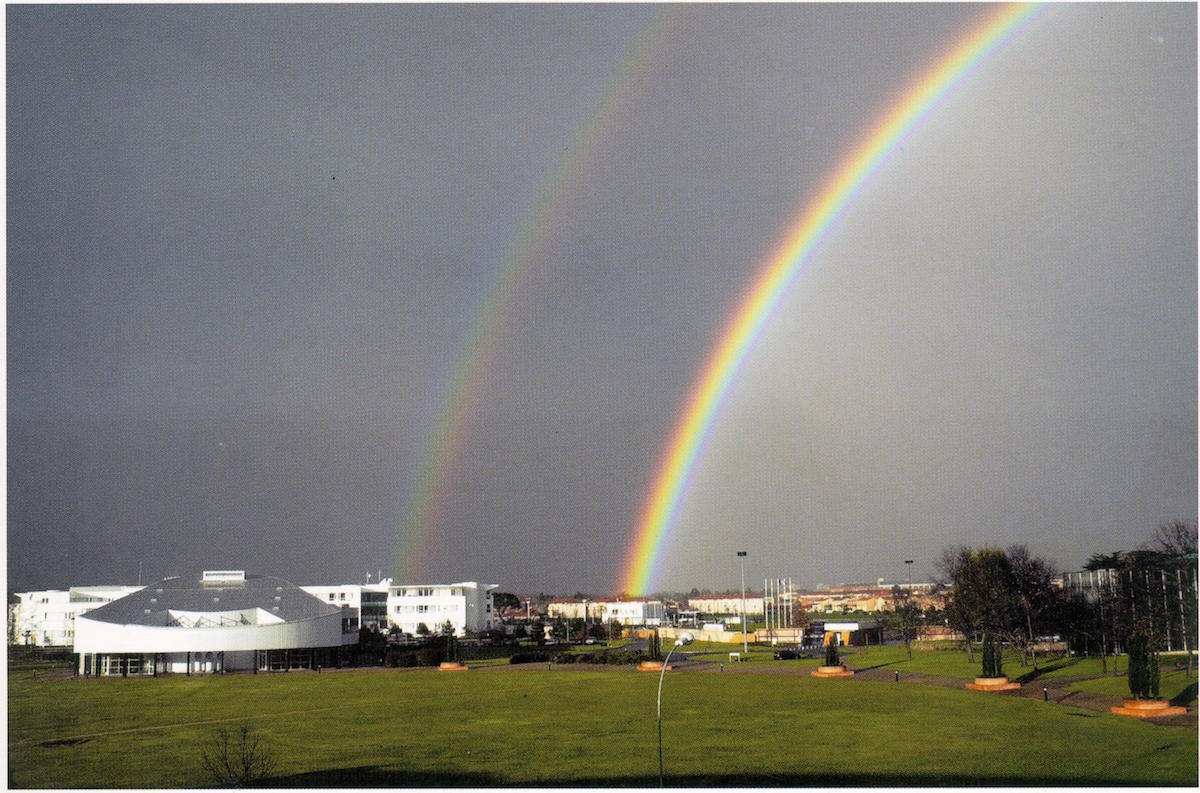
SAN FRANCISCO — Why are there so many songs about rainbows?
Perhaps because there are so many different types, each with its own distinctive features, new research suggests.
There are 12 types of rainbows, distinguished by various characteristics, the study suggests. Fat droplets of water or tiny sprays of mist will affect them, along with the angle of the sun. Rainbows can even appear as twins, triplets or quadruplets, Jean Ricard, a researcher at the National Meteorological Research Center, in France, said here yesterday (Dec. 17) at the annual meeting of the American Geophysical Union.
And even a single rainbow is always changing, he said.
"They don't look alike because when we look at a rainbow, one second later, the drops which form the primary bow and the secondary bow are not the same, because they are falling," Ricard said here in a news briefing. "If you look carefully after a few minutes you will start to see some changes in each rainbow." [Infographic: Earth's Atmosphere – Top to Bottom]
Classification scheme
Scientists have understood the basics of rainbow formation since at least Descartes' time: Sunlight interacts with water droplets in the sky, and the light is both reflected and refracted as it enters and leaves the raindrop. Because different wavelengths of light — which correspond to different colors — slow down by different speeds when they hit a raindrop, the different colors get bent at different angles, separating into the rainbow's distinctive hues. (The bizarre phenomenon known as a fire rainbow is neither a fire nor a rainbow, because it occurs when light refracts through ice crystals, not raindrops.)
Get the world’s most fascinating discoveries delivered straight to your inbox.
In the past scientists tried to classify rainbows based on the colors in the rainbows, or the size of the droplets they refracted through. But those classifications often missed certain types of rainbows.
To capture all the myriad "flavors" of rainbows, Ricard and his colleagues tried to figure out the minimum set of characteristics that would describe all rainbows. It turns out that rainbows can have up to four characteristics . There is the primary bow, with red on top and blue-violent on the bottom. Above that, secondary reflections inside a rain droplet always form a secondary, fainter bow above the primary bow, with the colors reversed. Between the two is a dark region, called Alexander's band, where little light from the raindrops light reflects. And sometimes, there are additional bows, called supernumerary bows, which may occur when the light rays spread and cancel each other out via diffraction and interference in the atmosphere.
Types of rainbows
Based on those characteristics, they determined there are 12 different types of rainbows, with imaginative names like RB_1, RB2, etc. The rainbows vary by whether all colors are visible, whether they have a strong Alexander's band, and whether there are supernumerary bows. Some of the more striking rainbows include only red arcs, and then there are yellow-and-orange rainbows.
When Ricard and his colleagues analyzed the physics, they found that the height of the sun in the sky was the biggest single factor affecting the rainbow's appearance. For instance, when the sun is very low in the sky, such as at sunset, light is much less intense and must travel much farther to reach the eye. Only the red wavelengths are able to make it through the atmosphere at this time, he said
"At sunset or sunrise, the color of the sun and the intensity of the incoming light changes dramatically," Ricard said.
The size of the droplet also affected a rainbow's appearance, though to a lesser degree. Wider drops make for less vivid rainbows with more widely spaced hues, he said.
While rainbow research may seem more suited to daydreamers and poets, it may have practical applications, Ricard said. For instance, if scientists can spy rainbows on exoplanets, that may be a sign of atmospheric water. And where there's water, there's often life.
Follow Tia Ghose on Twitterand Google+. Follow Live Science @livescience, Facebook & Google+. Original article on Live Science.

Tia is the editor-in-chief (premium) and was formerly managing editor and senior writer for Live Science. Her work has appeared in Scientific American, Wired.com, Science News and other outlets. She holds a master's degree in bioengineering from the University of Washington, a graduate certificate in science writing from UC Santa Cruz and a bachelor's degree in mechanical engineering from the University of Texas at Austin. Tia was part of a team at the Milwaukee Journal Sentinel that published the Empty Cradles series on preterm births, which won multiple awards, including the 2012 Casey Medal for Meritorious Journalism.



